The River Wey Water Quality Blitz!
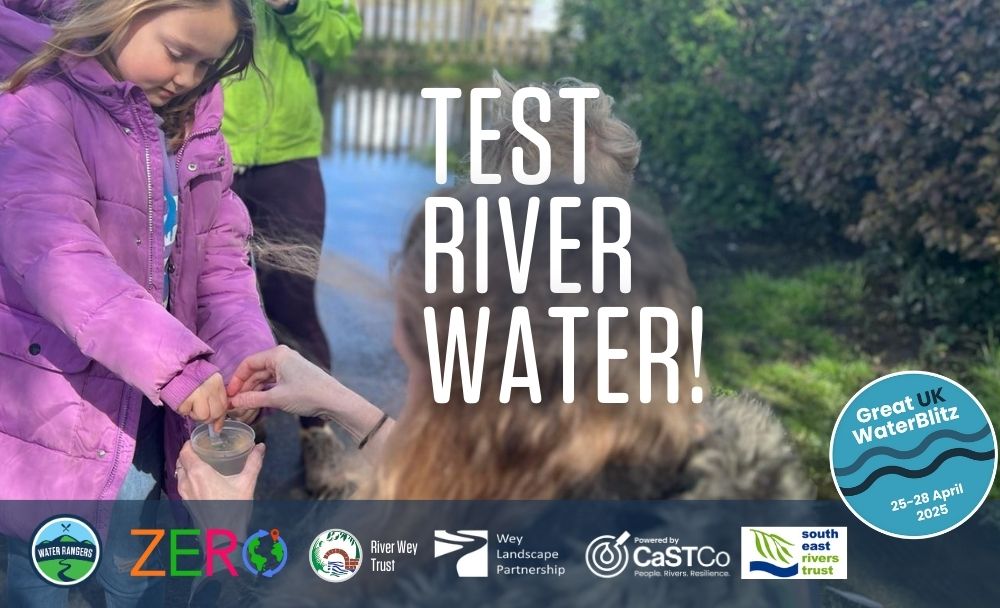
Over this past weekend, volunteers from across the River Wey Catchment in the UK collected water quality samples to get a snapshot of its health. The event was part of national programs designed to help us all connect with rivers and learn more about their health. You can access our slides for the event here.
The blitz doesn’t stop here. Read below to understand other ongoing water monitoring programs that you can get involved in!
- #BigRiverWatch: This is a national program by the Rivers’ Trust, and it’s continuing until May 1st! Get out there until the 1st of May to connect to the river and determine where issues are happening.
- #GreatUKWaterBlitz and Water Rangers #WaterTestingWeekend : Alongside Earthwatch’s Freshwater Watch, we have collected nitrate and phosphate readings at both our regular testing spots and new locations. Thank you to the amazing volunteers who collected over 40 samples on Friday. Learn more at the River Wey Trust to get involved in monthly monitoring in this region.
- #CaSTCo E. coli monitoring: We tested E. coli at most of our water testing sites using the new R-Card method. This method was trialled alongside a subset of Great UK Water Blitz locations, thanks to the national CaSTCo (Catchment Systems Thinking Cooperative) project. Plus, thanks to generous funders, we were also able to compare the results of different E. coli monitoring methods, processing samples at Water Rangers Community Lab for E. coli monitoring at ZERO Guildford. Sign up at ZERO Guildford to help us process samples every Friday and Saturday morning!
The main event!
After learning about Water Rangers and receiving their homework to explore their local waterways for the Big RiverWatch event, we got right into it. We had 40+ people helping us process samples!
First, chemistry…
Our event at ZERO Guildford saw our seasoned volunteers train new testers to test for a variety of water chemistry tests using samples collected by our volunteers the day before.
A combination of Water Rangers and the Great UK Water Blitz tests were completed, including:
- temperature
- conductivity
- pH
- alkalinity
- hardness
- nitrates
- phosphates
We welcomed many new volunteers, including the Guildford MP, Zoe Franklin, who all learned how to use the equipment and conduct the tests.
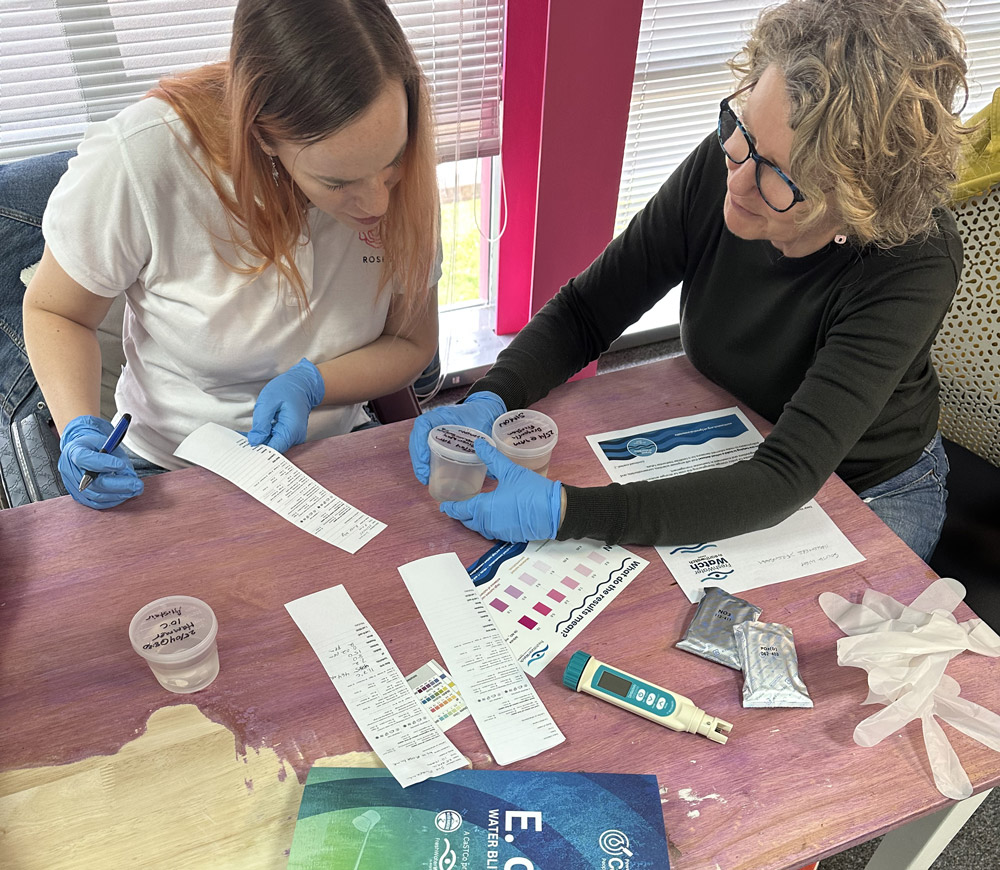
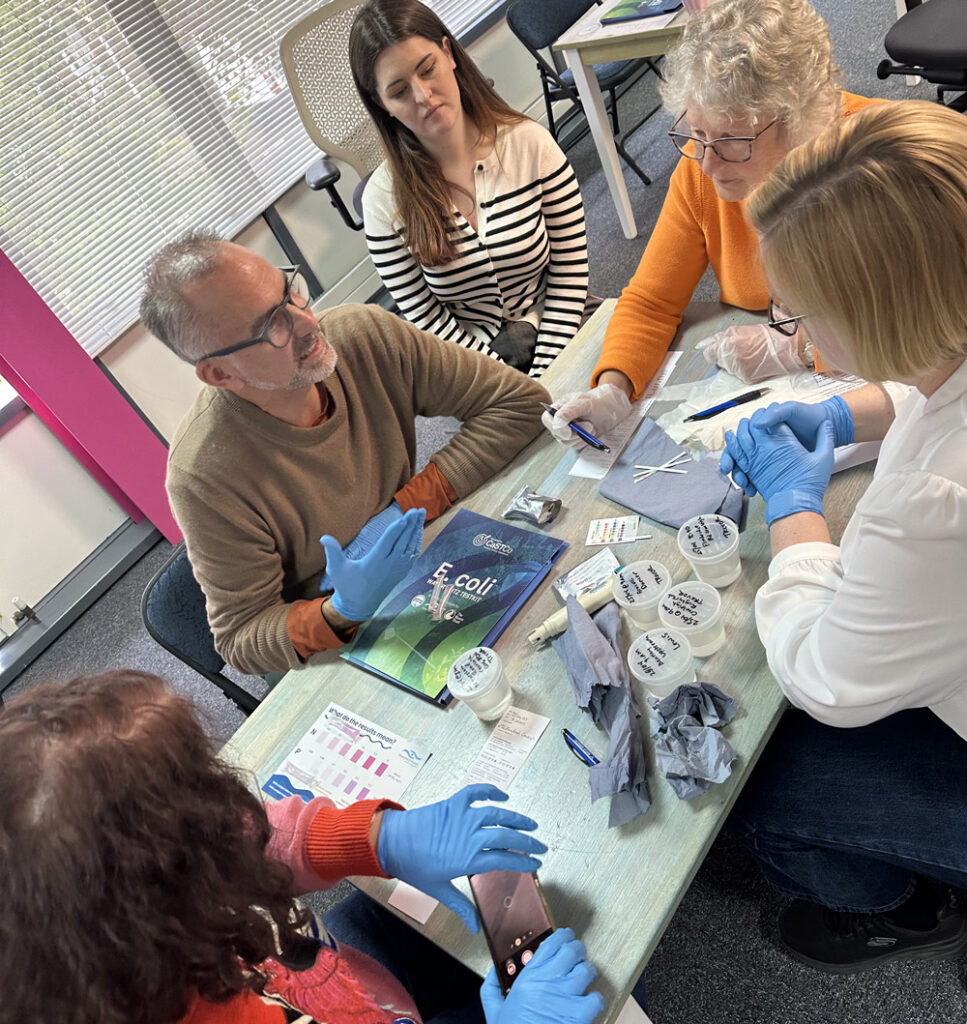
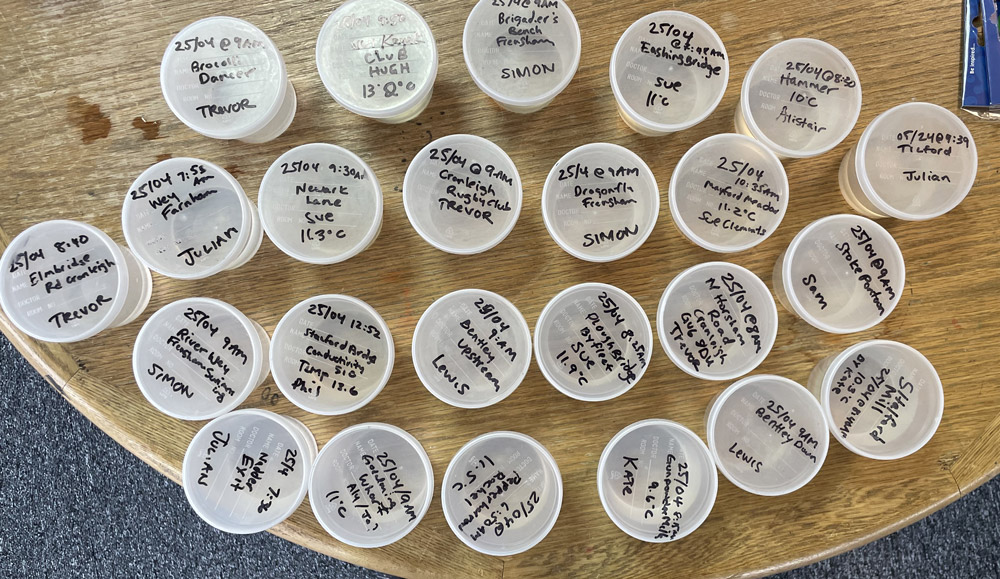
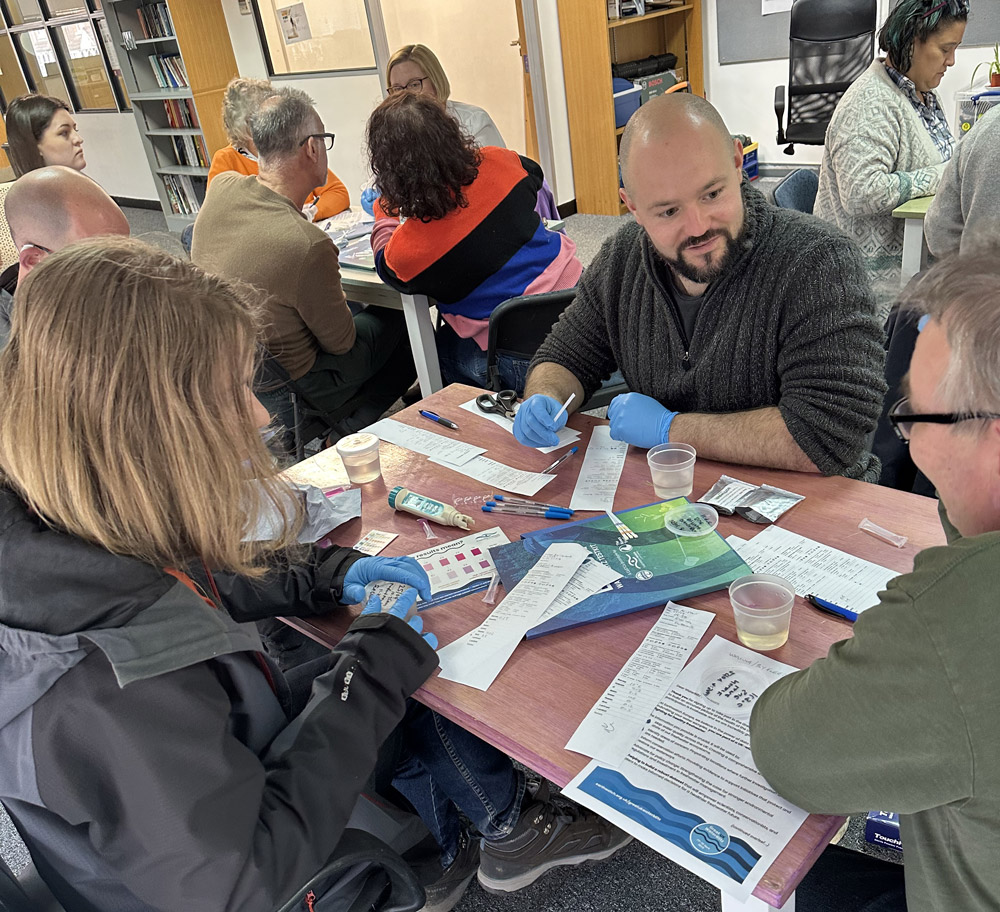
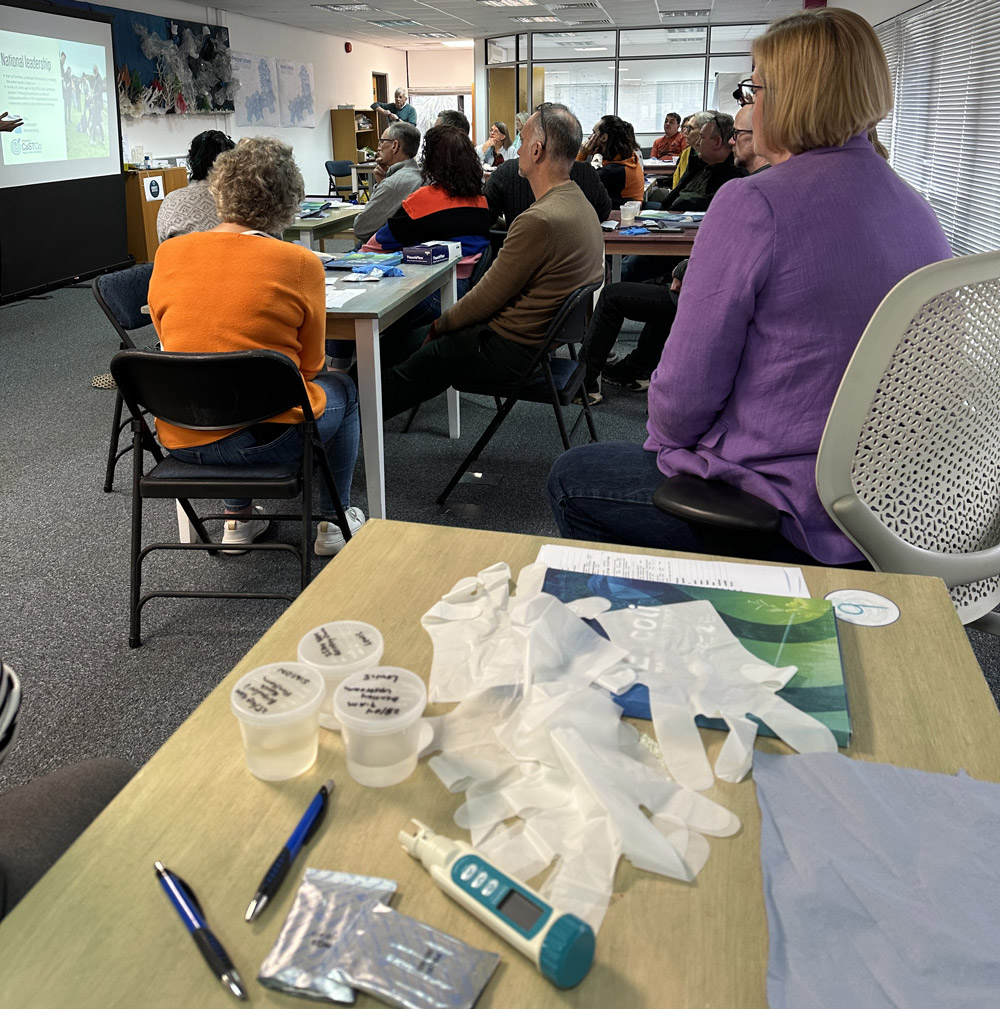
Then, E. coli…
Additional samples were collected Saturday morning to test for E. coli bacteria (the stuff that’s in poo– coming from run-off soil, agriculture, and sewage) using the R cards. Volunteers learned how to collect the samples, the importance of preventing cross-contamination, and how to process the cards and get them ready for incubation. We’ve put together a kit so that others can use this method here. Check out our new E. coli Testkit.
Using the samples from Friday, volunteers then learned how to read the results from the R-cards and determine the amount of E. coli in the sample. While in some cases, water samples contained both high levels of nutrients (phosphate and nitrate) and E. coli, it was surprising to see that the results varied. High levels of nutrients did not always mean there was a lot of E. coli present in the water.
But we didn’t stop there! We compared the E. coli results of the R-cards against the certified IDEXX colilert method used at our community lab.
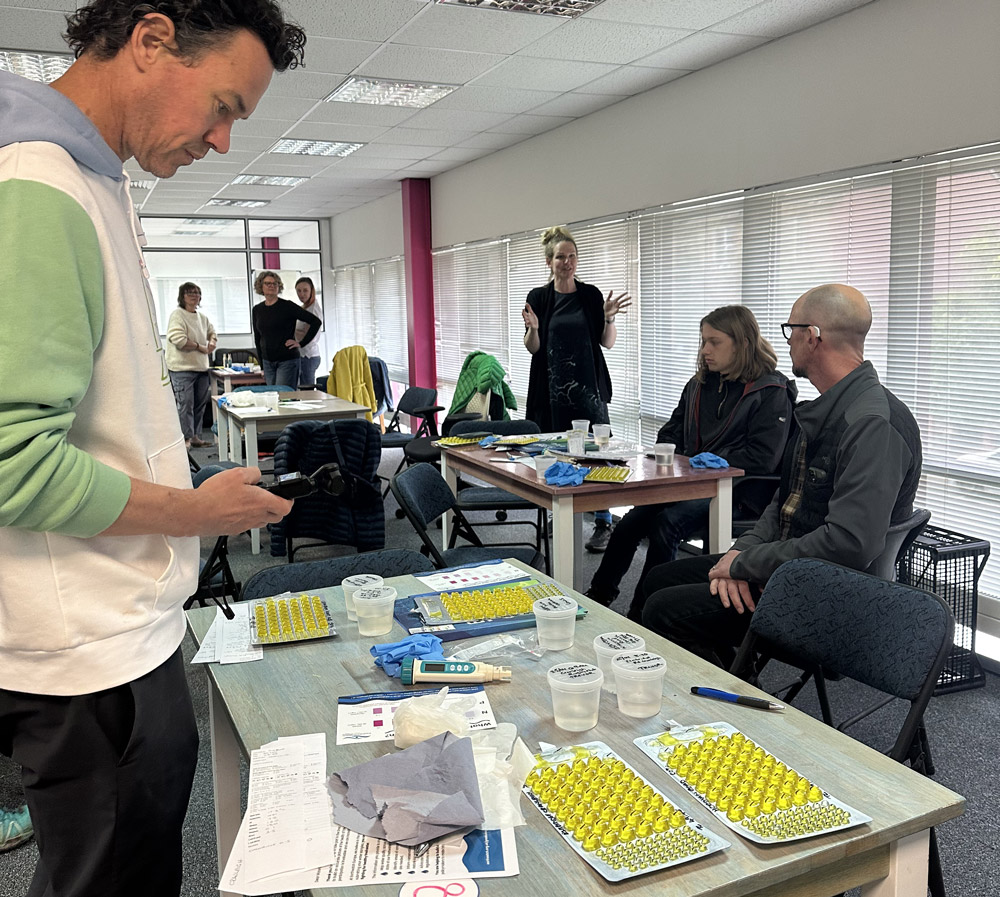
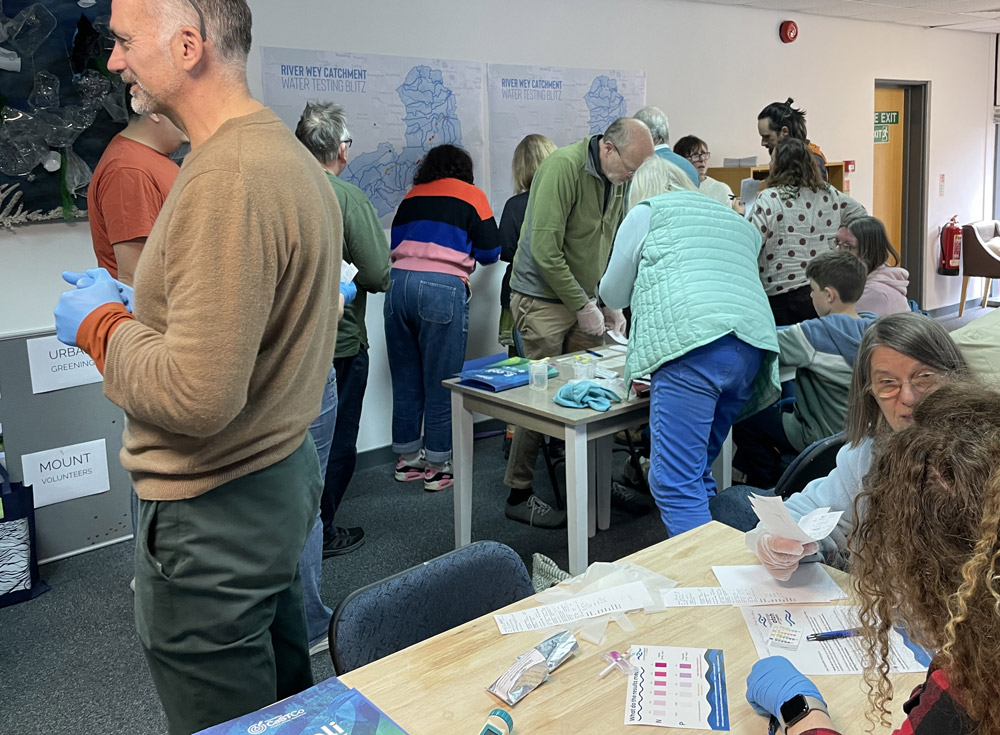
From those results, we made a live map to see the general theme of the results in real-time. On the left, our phosphate/nitrate results, and on the right, our E. coli results.
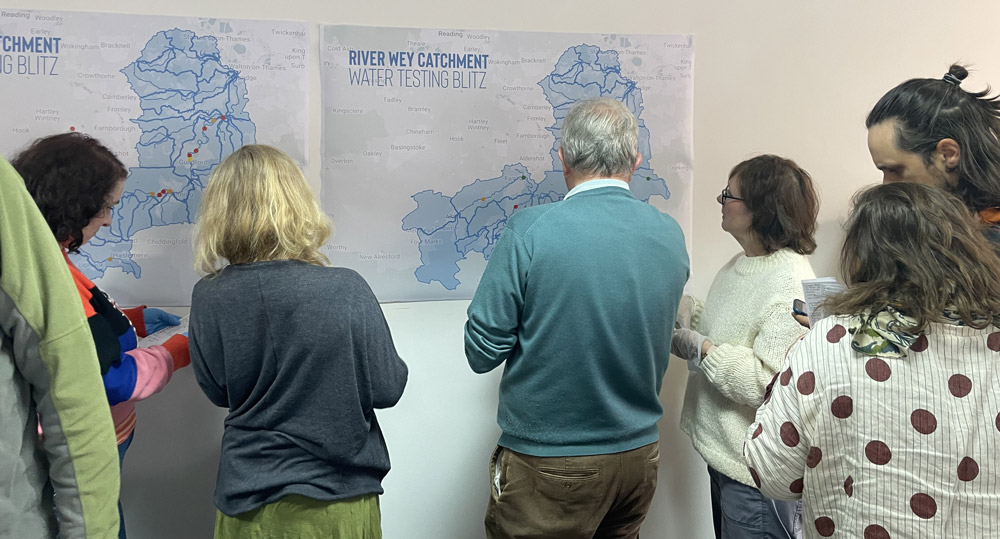
The next day… kicktesting for invertebrates
More volunteers conducted kicktesting in various locations around the catchment with the River Wey Trust. Photos here from Liphook (Allee’s Meadow). We achieved a record score of 17 for RiverFly, including two enormous damselflies and a large trout that was enjoying all the food we were kicking up (not part of the scoring, but generated extra enthusiasm from our group!). It was a pleasure to host enthusiastic Duke of Edinburgh volunteers who will now test regularly!
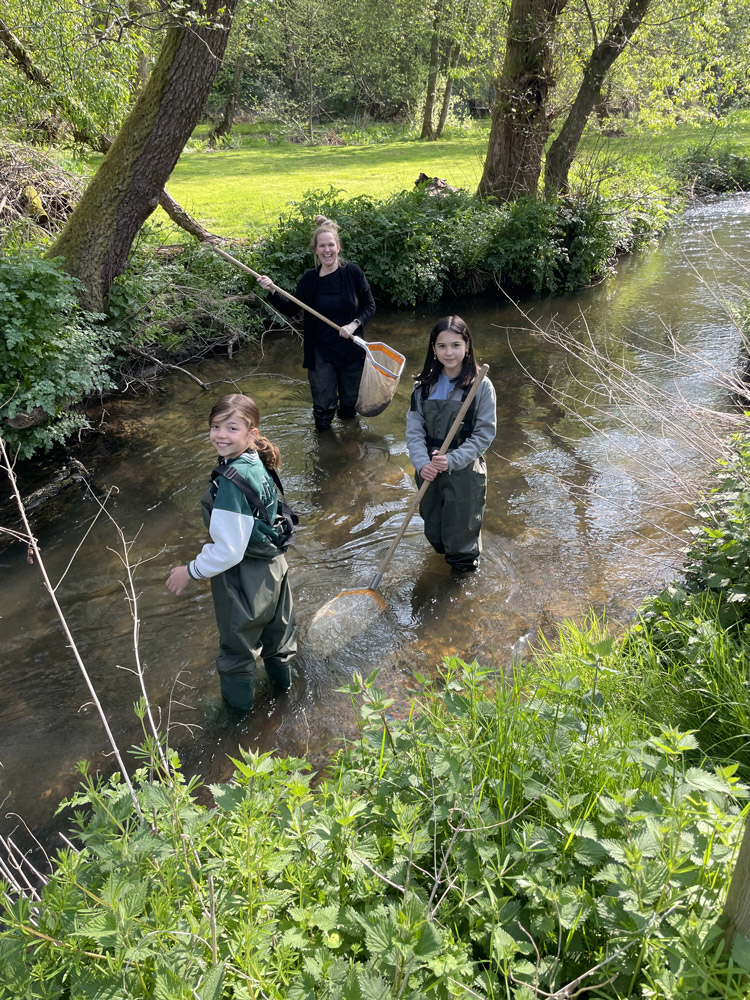
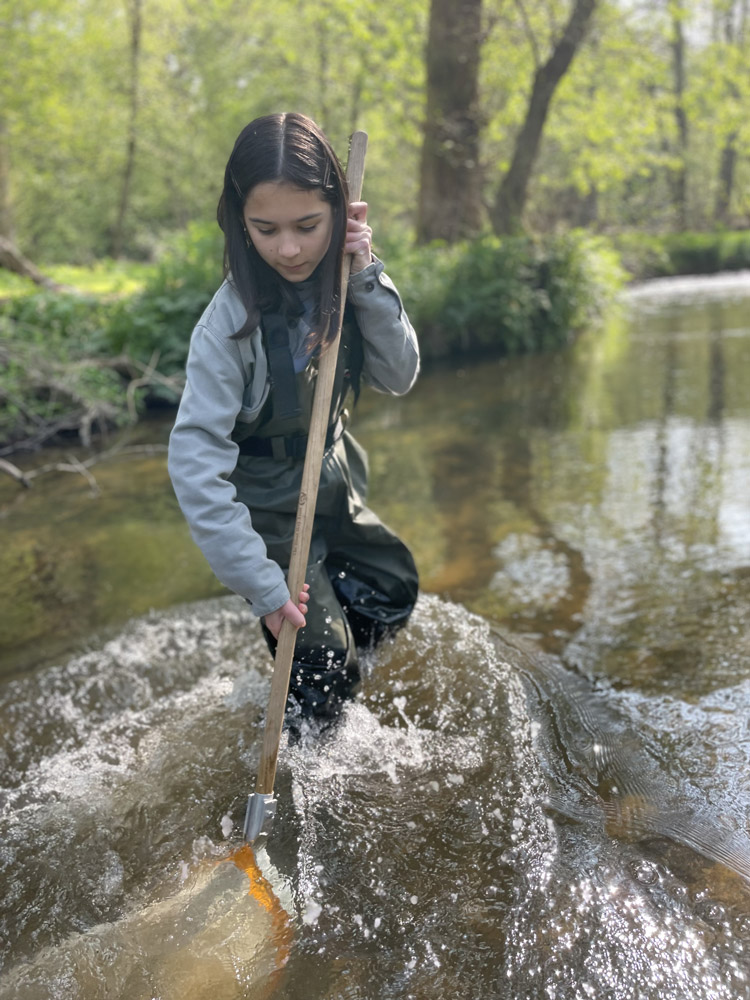
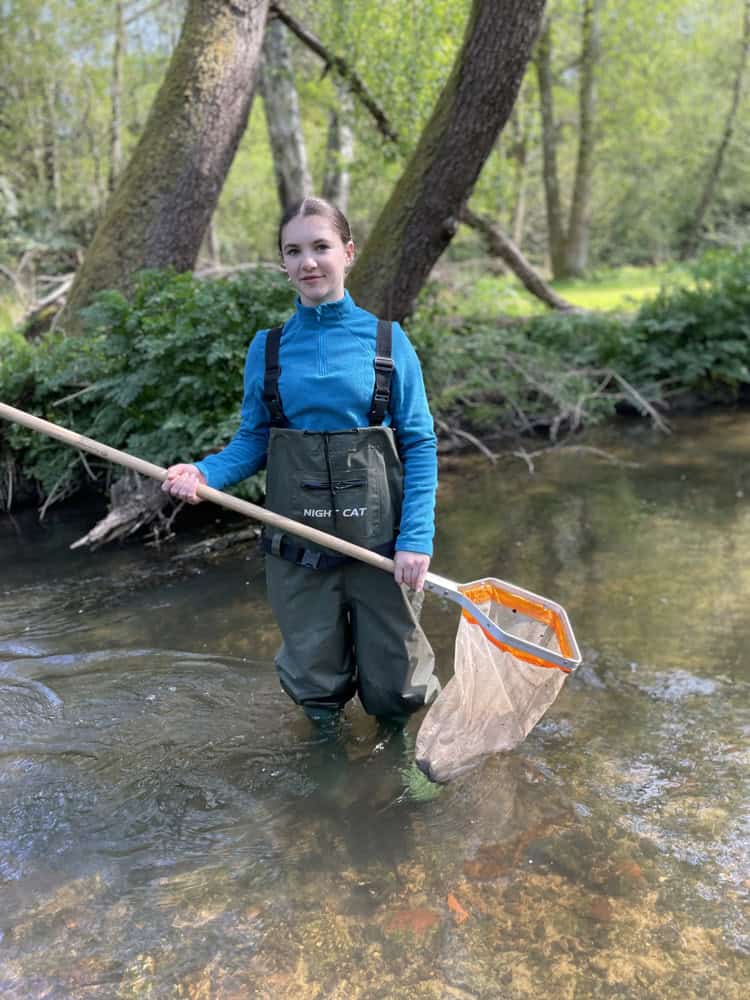
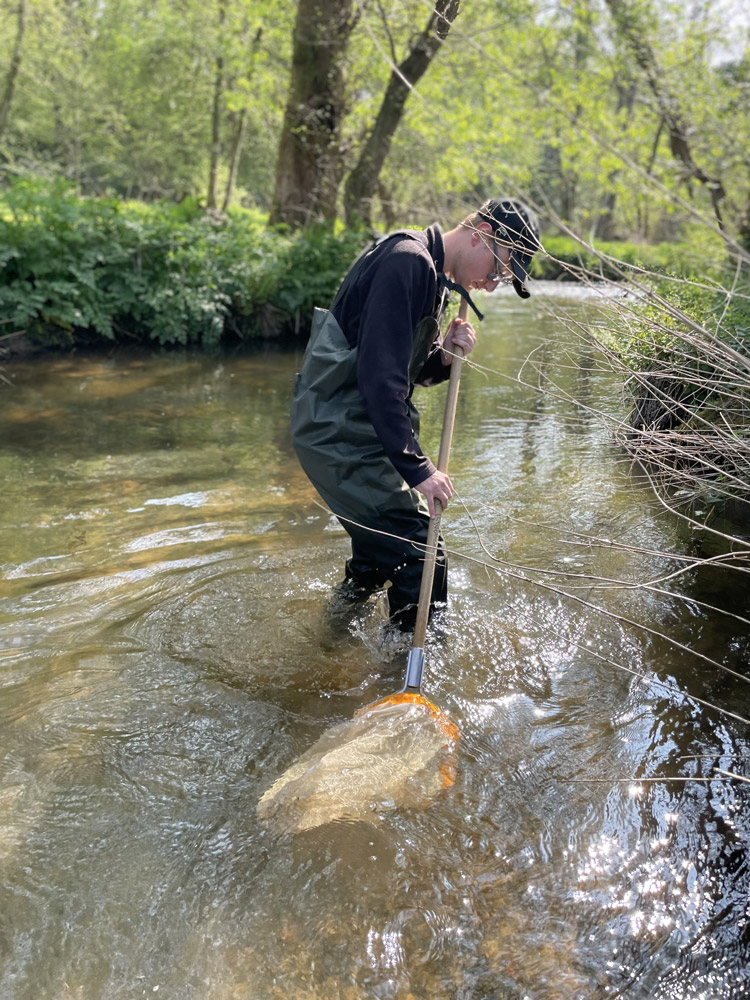
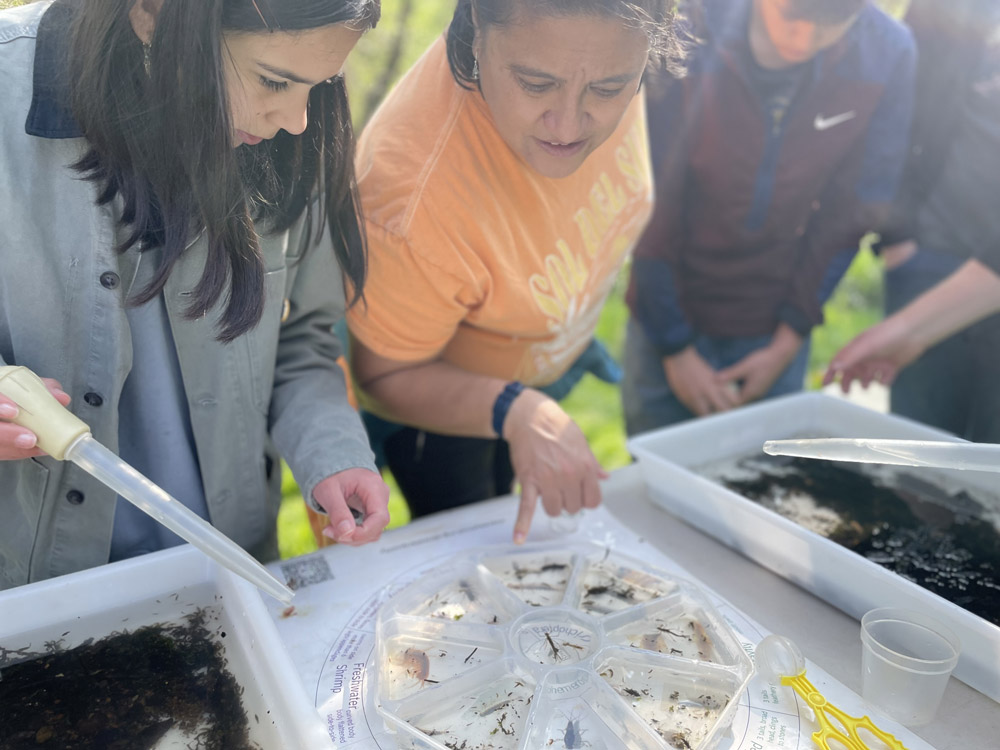
We also received a trial of a new kit for assessing pathogenic risk.
Big thanks to Rui from MolEndoTech for coming out on Friday to test their new ultra-portable prototype of Bactiquick — a 15-minute water testing device. Water Rangers and the River Wey Trust will be trying it out to figure out the best ways to help communities get quick, real-time answers to the big question: “Is it safe to swim here?”
We conducted a few tests together and were excited to see a strong correlation between our high E. coli results (which we obtained the next day after the 24-hour incubation) and Bactiquick’s 15-minute risk scores — specifically, a high E. coli level corresponded to a high risk score in our case. What’s even cooler is that it doesn’t just pick up on E. coli, but also on other nasty pathogens that can cause serious issues. We’re really excited about this technology — stay tuned as we continue testing and share our findings!
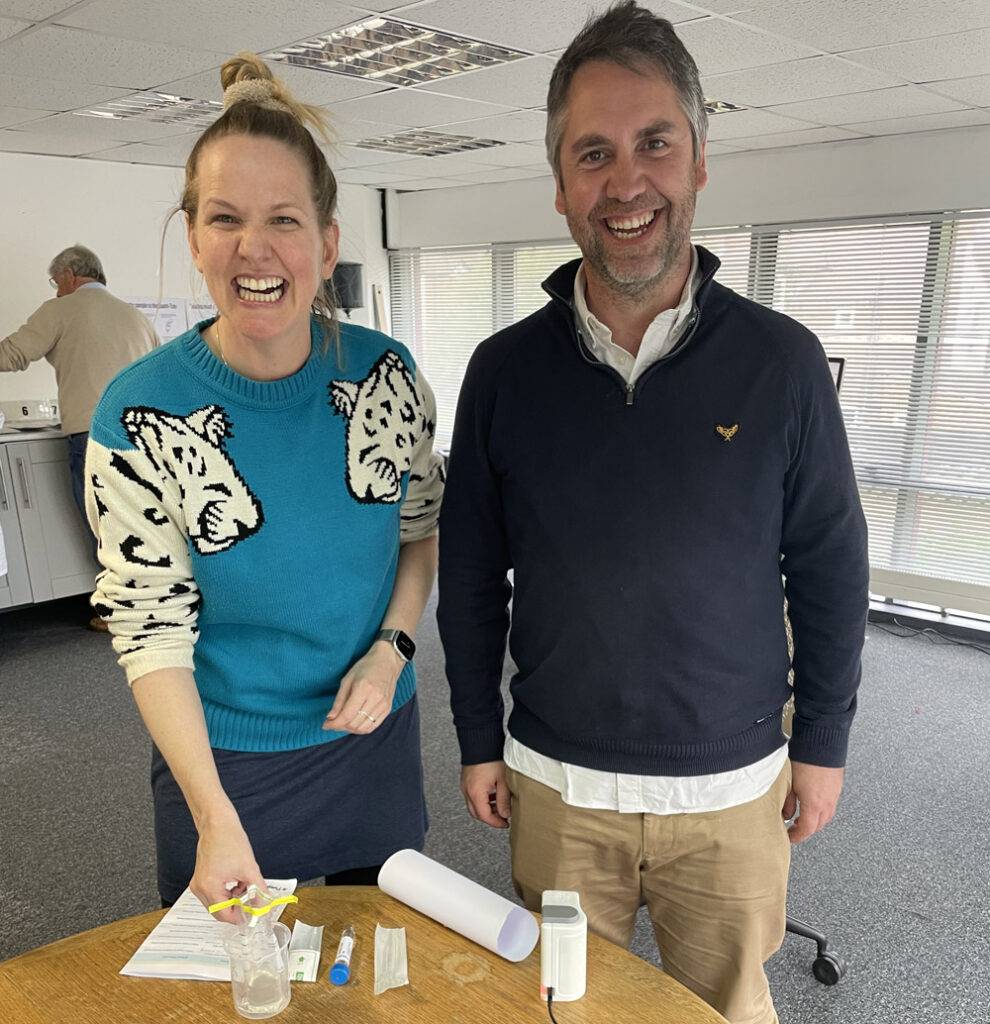
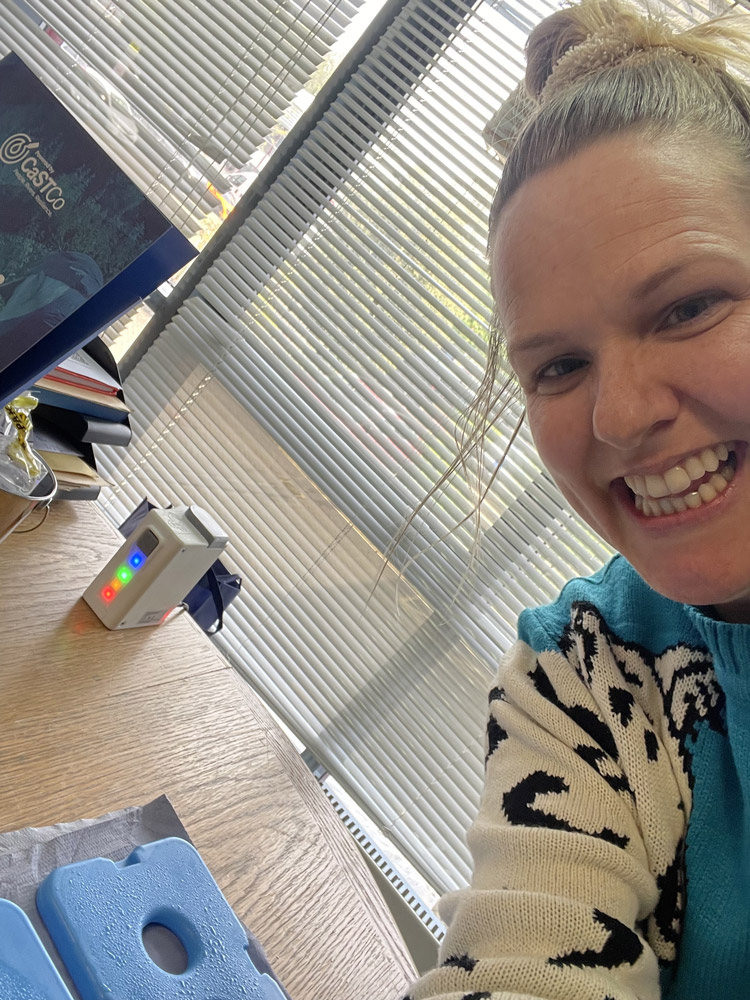
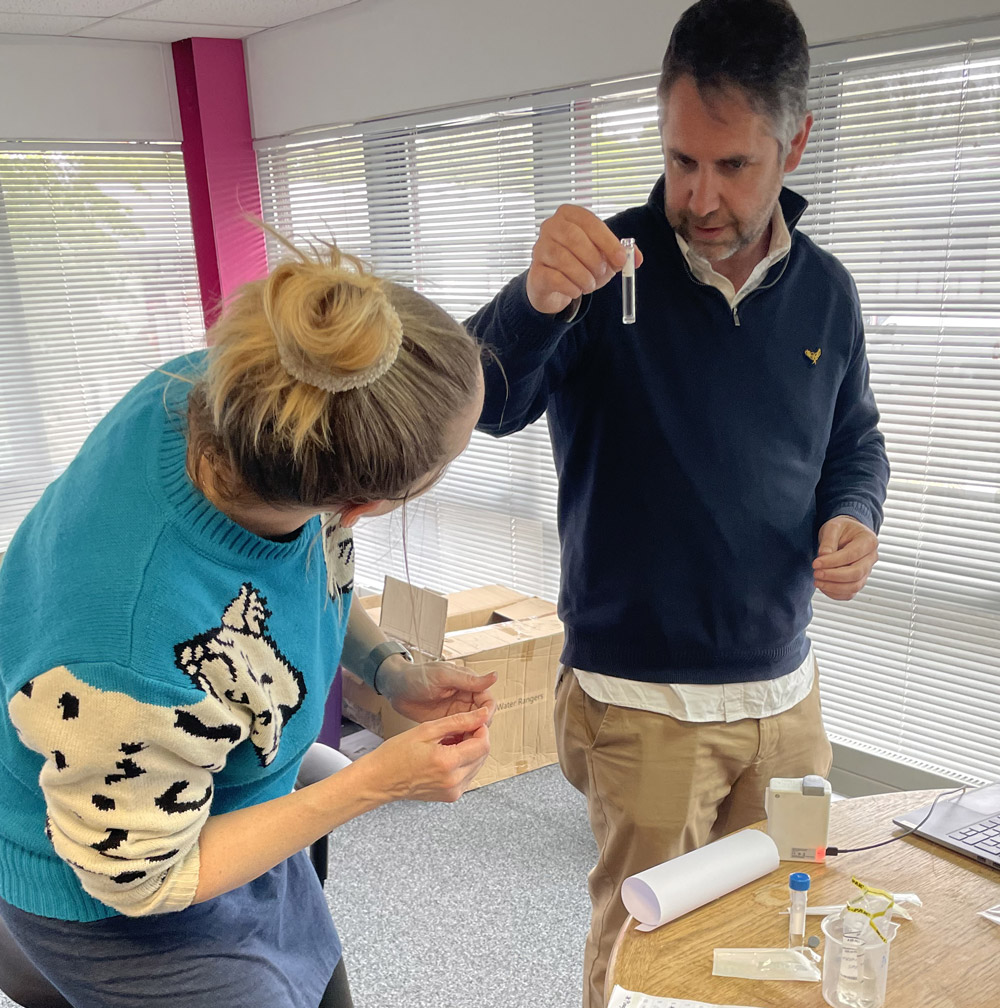
Results
We are still entering data and sharing it with partners, expecting to add at least 10-15 more locations. Overall, the initial results were better than expected, considering our low expectations, given the levels we’ve seen over the past two years of testing. However, we were pleasantly surprised by how many E. coli readings were below the UK’s recommended levels for E. coli for bathing waters (set at less than 1000 CFU/100 mL).
To help visualize the results, we downloaded the data and created two maps, which will be updated as results come in. You can also view all results on our data platform.
Nitrates
E. coli
What’s next?
We are awaiting reports through various partners, which we’ll share when they’re complete. In the meantime, here’s some things you can do:
- Until May 1st, download the BigRiverWatch app and visit the river to record your observations!
- Check out our testkit store, including our water chemistry equipment and our brand new E. coli Testkit (available in both the UK and Canada)
- Volunteer! You can join the River Wey Trust events for monthly monitoring, the weekly ZERO Guildford Community Lab volunteering (Friday and Saturday mornings), and South East Rivers Trust is helping organise more kicktesting sites
What do our results show?
We’ll find out how our results compare to other regions over the coming months as part of the amazing work Freshwater Watch is doing!
These testing events are great ways to identify potential hot spots, but it’s essential to test regularly, as weather conditions significantly impact water quality. For example, it has been a dry few weeks, and we know, for instance, that some of our regular monitoring locations usually have much higher readings for E. coli. We encourage everyone to see how results change over time. For E. coli, we test weekly at our community lab in Guildford at popular recreation spots, such as those for swimming and boating, and monthly at many other locations for water chemistry.
You can view all the water testing results on the Water Rangers data platform and, as soon as we have time to re-enter the results, on the FreshwaterWatch data platform.
Thanks to everyone who made this possible!
This event was made possible thanks to funding from #CaSTCo, the South East Rivers Trust (including our catchment, the Wey Landscape Partnership), and a generous individual donor, as well as the incredible time and resources of the River Wey Trust and ZERO Guildford.
It was also supported by many volunteers who collected and processed the samples. Without their dedication, it wouldn’t have been possible. Many hands make light work!